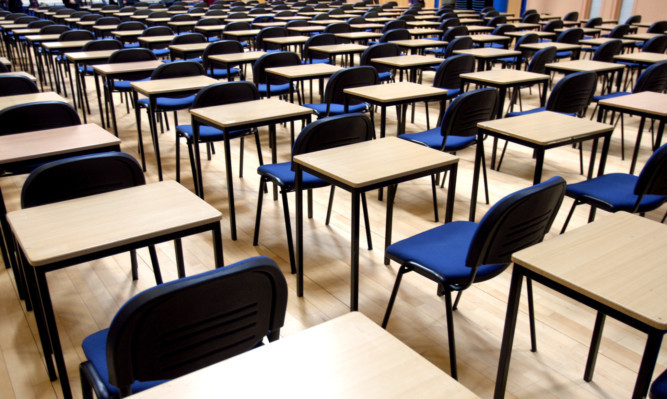Dundee pupils are doing much better in exams than official figures suggest, the city council has claimed.
Councillors will be presented next week with data on how well children performed in Standard Grades and Highers last year compared to the Scottish average and to similar local authorities.
The figures show only 26% of city pupils passed five or more Standard Grades at credit level, putting Dundee in last place nationally. Performance at Higher was a little better, with 20% of pupils passing five or more.
That put the city 28th out 32 local authorities and fifth out of eight among comparable authorities, which include Glasgow and Clackmannanshire.
Rankings based on exam passes by pupils from what are classed as deprived neighbourhoods were more encouraging, with Dundee in 23rd place for Standard Grade and 24th for Higher.
One area where the city did considerably better was the proportion of school leavers going on to jobs, training, college or university.
Its score of 90% was a 1.3% improvement on the previous year and enough to take 16th spot nationally.
The council is arguing the indicators selected for making comparisons between local authorities represent the top level of awards in the exam system and do not reflect improvements in attainment.
It said: “At a national level, the performance of S4 pupils is measured against a number of specific outcomes based on performance in Access 3 and Standard Grade examinations.
“The performance of pupils in Dundee has increased across all measures over the last five years and the ongoing aim for schools is a continued rise in pupil attainment across each measure.”
The 2012 results had shown increases in passes in S4 and for the first time, performance in English and maths had met the council’s own target and matched the results from similar areas.
“Progress has been made but it is recognised that there is room for further improvement and this is a focus area across our schools,” the council said.
It added that the performance of S5 pupils sitting Highers had improved last year.
“The attainment of any S5 group is largely based on the strength of the group’s performance in the previous year’s S4 examination diet,” the council said.
“With this in mind, the performance of S5 from their S4 baseline was good.
“It is important to note that S5 pupils do not take Standard Grade courses and that many pupils now undertake Intermediate courses or a two-year Higher course leading to the examination at the end of S6.
“This is why the performance data for the end of S6 sets out a clearer picture of overall pupil performance, since by the end of S6, 30% of pupils now leave school with three or more Highers, while 20% of pupils leave with five or more Highers.
“Our performance against our benchmarked authorities has improved year on year over the last five years.”
The council added: “Due to the restrictions of the present statistical systems for examination results, a completely new format of results is being prepared for session 2013/14.
“We are looking at the introduction of this new system and the implications for the city.”
